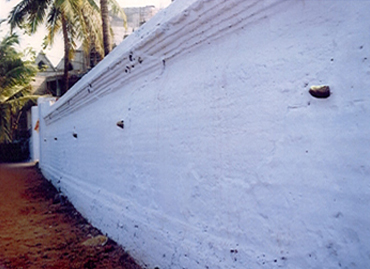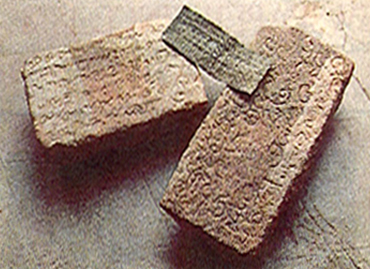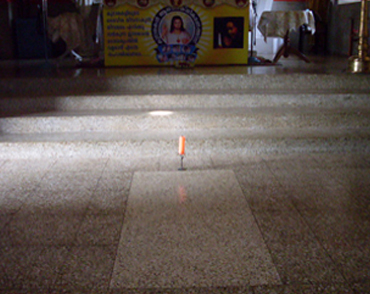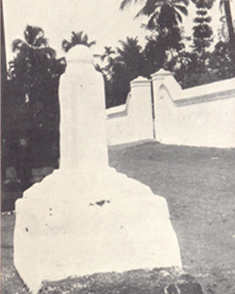The present church in the name of St George (West church) was actually located at the bank of river (Maanjally River). There was a boat jetty locally known as pallikadvu (Church boat jetty) at northwest side of this church that was used till the end of the 19th century. In 2001, an investigation team identified the remains of laetrite stone steps (padavu). Earlier an extension of the river was directly connected with the boundary of the church plot and later due to the shortage of river water, the riverbed reformed as paddy field. At present, when rainwater floods during monsoon season in the paddy field, reflects the paddy field as river view, which recalls the ancient topographical similarity. Even though this location is not existent now, a clear and real proof is available in the Varthamanapusthakam.
In historical records, it is seen that there was a regional ruler, known as Mangattu Kaimal who resided near the church during the 16th century. An account seen in Jornada is as follows: “Before the Archbishop left Vaipicota the Caimal of Angamale (Kaimal of Angamali) came to visit him, whom they call the black king(Karutha tavazhi) of Angamale because there is another whom they call the white ( Velutha tavazhi), and both are reigning,because it is a custom among the Malabaris to have inmany places two and three kings of a Kingdom with lands distinct from one another, but all give orders,..” The remains of edifices of the King are still seen in a private property near the church. The king had donated large areas of land to the church, by exempting land tax. The typical boundary stones (thoranakallu) in different locations are still remaining near the premises of the churches.




